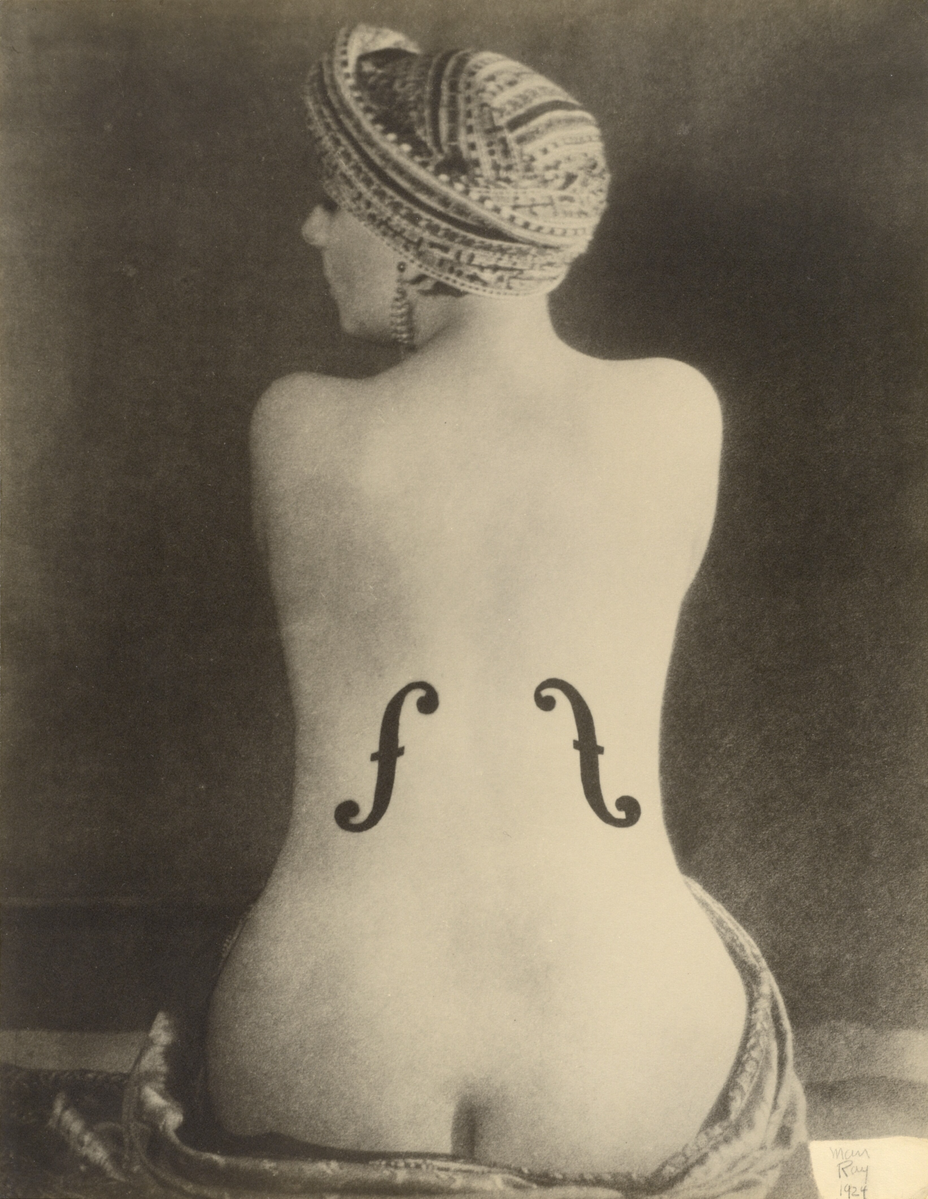It would surprise none of us to encounter a young artist looking to cast off his past and make his mark on the culture in a place like Williamsburg. But in the case of Man Ray, Williamsburg was his past. One must remember that the Brooklyn of today bears little resemblance to the Brooklyn of the early twentieth century in which the famed avant-gardist grew up. Back then, he was known as Emmanuel Radnitzky, the son of immigrant garment workers. It was after he took up the art life in Manhattan that he met the gallerist Alfred Stieglitz, forming an association that would begin his transformation from aspiring painter into form-changing photographer.
Inspired by Marcel Duchamp’s Nude Descending a Staircase, No. 2 after seeing it at the epoch-making 1913 Armory Show, Ray befriended the artist himself. Despite its considerable language barrier, this relationship gave him a way into the liberating realms of surrealism in general and Dada in particular. “The movement’s refusal to be defined or codified gave Ray the rationale to leave his former life and head to Paris, where he could complete his reinvention unfettered by his past,” says James Payne in the new Great Art Explained video above. It was this relocation — almost as dramatic, in those days, as going from Brooklyn to Manhattan — that offered him the chance to become a major artistic figure.
Soon after settling in Montparnasse, Ray “made an accidental rediscovery of the camera-less photogram, which he called ‘Rayographs.’ ” This technique, which involved placing objects on photosensitive paper and then exposing the arrangement to light, produced images that were “dubbed pure Dada creations” and “played a significant role in redefining photography as a medium capable of abstraction and conceptual depth.” It was in that same part of town that he entered into an artistic and romantic partnership with Alice Prin, more widely known as Kiki de Montparnasse — and even more widely known, a century later, as Le Violon d’Ingres, which in 2022 became the most expensive photograph ever sold.

The $12.4 million sale price of Le Violon d’Ingres is rather less interesting than the story behind it, which involves not just Ray and Kiki’s life together, but also a process of technical experimentation whose result “perfectly embodies the surrealist interest in challenging traditional representations and blending everyday objects with the human form.” Tame though it may look in the era of Photoshop (to say nothing of AI-generated imagery), the picture’s convincing placement of violin-style sound holes on Kiki’s classically presented body suggested to its viewers that photography had non-documentary possibilities never before imagined — certainly not in Williamsburg, anyway.
Related content:
Man Ray and the Cinéma Pur: Watch Four Groundbreaking Surrealist Films From the 1920s
Man Ray’s Portraits of Ernest Hemingway, Ezra Pound, Marcel Duchamp & Many Other 1920s Icons
The Home Movies of Two Surrealists: Look Inside the Lives of Man Ray & René Magritte
Alfred Stieglitz: The Eloquent Eye, a Revealing Look at “The Father of Modern Photography”
Based in Seoul, Colin Marshall writes and broadcasts on cities, language, and culture. His projects include the Substack newsletter Books on Cities and the book The Stateless City: a Walk through 21st-Century Los Angeles. Follow him on Twitter at @colinmarshall or on Facebook.


Leave a Reply